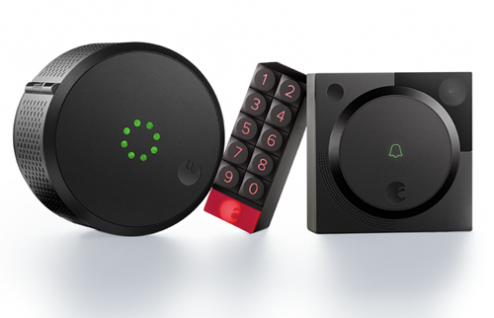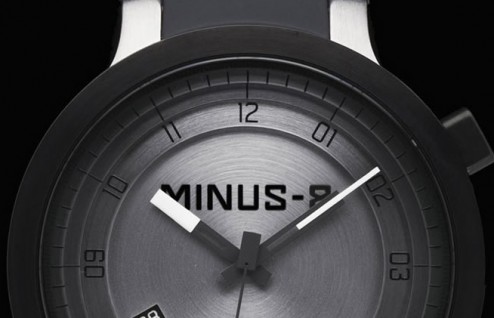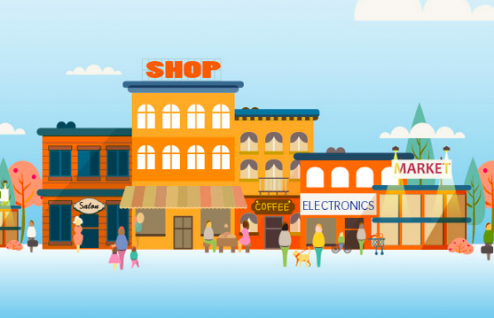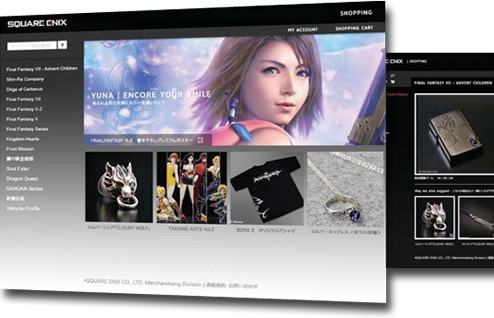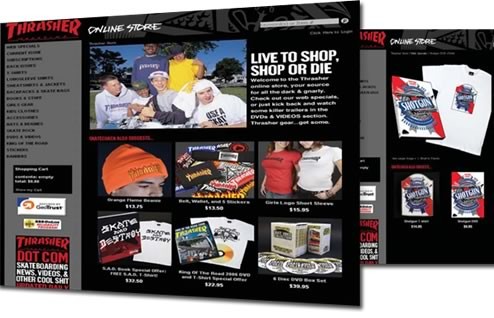Improving Usability through Micro-Interactions in Ecommerce
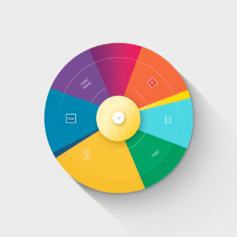
“Make it simple, but significant.” – Don Draper, Mad Men
While Don Draper is a fictional character, this quote from the television show “Mad Men” is widely recognized and speaks to the power of simplicity in design, a concept highly relevant to the use of micro-interactions in eCommerce.
Q1: What are micro-interactions and why are they important in eCommerce?
Q2: How can micro-interactions enhance the user experience in an eCommerce platform?
Q3: What are some examples of effective micro-interactions in eCommerce?
Q4: How do micro-interactions contribute to usability in eCommerce?
Q5: Can micro-interactions influence the purchasing decisions of customers?
Q6: How can micro-interactions be effectively designed and implemented in an eCommerce setting?
Q7: What are the best practices when incorporating micro-interactions in eCommerce?
Q8: Can micro-interactions improve the mobile shopping experience?
Q9: How can micro-interactions help in reducing cart abandonment rates?
Q10: How do micro-interactions relate to the overall eCommerce conversion funnel?
What are micro-interactions and why are they important in eCommerce?
Micro-interactions are subtle design elements that accomplish a single task. These are integral parts of almost any digital design project. You see them every day. From toggling a switch to see a password, to a subtle animation that signals a page is loading.
Micro-interactions are subtle design elements that accomplish a single task. These are integral parts of almost any digital design project. You see them every day. From toggling a switch to see a password, to a subtle animation that signals a page is loading.
In the context of eCommerce, micro-interactions can help in enhancing user experience, guiding users, providing feedback, preventing errors, and even promoting certain actions. For example, a simple animation that indicates an item has been added to the shopping cart can reassure the user that their action was successful.
Micro-interactions are also about feeling the system. A user can feel the system in physical or tangible interactions. In eCommerce, this could be the smooth transition of images in a carousel, the subtle highlighting of a menu item, or the shake of a password field when the wrong password is entered.
Moreover, micro-interactions often add a human touch to the design. They can mimic real-world behaviors or incorporate elements of humor and surprise that make the design more enjoyable to use. This can help in creating a connection between the brand and its customers, which is crucial in eCommerce.
Micro-interactions also contribute to the overall usability of an eCommerce platform. They can guide the user through their shopping journey, from browsing products, to adding items to the cart, and finally to the checkout process. By making this journey seamless and enjoyable, micro-interactions can help in increasing conversions and boosting sales.
Micro-interactions, while often overlooked, play a crucial role in eCommerce. They enhance user experience, foster brand connection, and contribute to the platform’s usability. Therefore, eCommerce businesses should give due importance to micro-interactions in their design strategy.
How can micro-interactions enhance the user experience in an eCommerce platform?
Micro-interactions can significantly enhance user experience on an eCommerce platform in several ways. First and foremost, they can provide immediate feedback to the user. When a user performs an action such as clicking a button or submitting a form, a micro-interaction can indicate that the action has been acknowledged and is being processed. This can help users understand that the system is working as expected and prevent confusion or frustration.
Furthermore, micro-interactions can guide users through the interface. For instance, subtle animations or changes in color can draw attention to certain elements, helping users understand where to click next or which option to choose. This can make the interface easier to navigate and the overall shopping experience more enjoyable.
Micro-interactions can also add a sense of fun and enjoyment to the shopping experience. For example, a cart that animates and “fills up” as items are added can make the shopping experience more engaging and enjoyable. This not only enhances the user experience but can also encourage users to spend more time on the platform, potentially leading to more purchases.
Moreover, micro-interactions can create a sense of continuity and flow in the user journey. By providing subtle cues and transitions between different stages of the shopping process, micro-interactions can create a smoother and more cohesive user experience.
Lastly, micro-interactions can also provide additional information or functionality without cluttering the interface. For instance, a product image that zooms in when hovered over can provide more detail without requiring the user to navigate to a different page. This can make the shopping experience more efficient and user-friendly.
Through providing feedback, guiding users, creating an engaging experience, maintaining continuity, and offering additional functionality, micro-interactions can significantly enhance the user experience in an eCommerce platform.
What are some examples of effective micro-interactions in eCommerce?
Micro-interactions are all about the small details in an eCommerce website or app that make a big difference in user experience. Here are some examples of effective micro-interactions in eCommerce:
- Add to Cart Animation: When a user adds an item to their shopping cart, a small animation showing the item moving into the cart can provide immediate visual feedback. This helps reassure the user that their action was successful.
- Hover Effects: When a user hovers over a product image, the image could change to show a different angle of the product or zoom in to show more detail. This provides additional information to the user without requiring them to navigate to a new page.
- Loading Animations: Instead of a static loading screen, an animation can make the wait feel shorter and keep users engaged. This is especially important during checkout when users may be anxious about their payment being processed.
- Form Validation: As users fill out a form, such as during checkout, real-time validation can show whether the information entered is valid. If an error is detected, a small animation or color change can draw attention to the field that needs to be corrected.
- Notification Bubbles: When users receive a new message or notification, a small bubble can appear over the relevant icon. This draws attention to the new activity without being intrusive.
- Progress Indicators: During multi-step processes like checkout, a progress indicator can show users how far they’ve come and how many steps remain. This helps set expectations and encourages users to complete the process.
- Scroll Animations: As users scroll down a page, new content can animate into view. This can make browsing more engaging and encourage users to explore more of the site.
- Interactive Product Sliders: Sliders allow users to view multiple products or features in a limited space. An interactive slider, where the movement of the slider is animated and responds to user interaction, can be a very effective micro-interaction.
To summarize,, these examples show how micro-interactions can make an eCommerce site more engaging, user-friendly, and efficient. They can provide feedback, guide users, and add a sense of delight to the shopping experience.
How do micro-interactions contribute to usability in eCommerce?
Micro-interactions play a significant role in enhancing usability in eCommerce. Usability refers to the ease of use and learnability of a human-made object. In the context of eCommerce, usability can be the difference between a successful sale and a lost customer. Here are some ways micro-interactions contribute to usability:
- Feedback: Micro-interactions provide immediate feedback about a completed action. This can be as simple as a button changing color when clicked or a confirmation message when an item is added to the cart. This helps users understand the result of their actions, making the interface easier to use.
- Guidance: Micro-interactions can guide users through their shopping journey. For example, a micro-interaction might highlight a button or change its appearance to indicate the next step. This can help users navigate the site more effectively.
- Visual Interest: Micro-interactions can add visual interest to an eCommerce site. This can make the site more enjoyable to use and encourage users to spend more time exploring.
- Error Prevention: Some micro-interactions can help prevent errors. For instance, form validation can alert users to mistakes in real time, allowing them to correct errors before they submit a form.
- Engagement: Micro-interactions can increase user engagement. For example, a progress bar that fills up as a user completes a form can motivate the user to complete the process.
Ultimately, micro-interactions are not just aesthetically pleasing—they also enhance the functionality and usability of an eCommerce site. By providing feedback, guiding users, adding visual interest, preventing errors, and promoting engagement, micro-interactions make eCommerce sites more user-friendly and effective.
Can micro-interactions influence the purchasing decisions of customers?
Yes, micro-interactions can indeed influence the purchasing decisions of customers. They achieve this by enhancing the user experience, creating a more engaging shopping environment, and providing subtle cues to guide customers towards making a purchase. Here are a few ways micro-interactions can influence purchasing decisions:
- Enhancing User Experience: Micro-interactions can make the shopping experience more enjoyable and intuitive. By providing feedback, guiding users, and adding an element of fun, micro-interactions can make customers more likely to enjoy their shopping experience and, therefore, more likely to make a purchase.
- Building Trust: Micro-interactions can also help build trust. For example, when a customer adds an item to their cart, a micro-interaction that visually confirms the action can reassure the customer that the site is functioning correctly. This can make customers feel more confident in the site and more likely to make a purchase.
- Reducing Friction: Micro-interactions can reduce friction in the shopping process. By making the interface more intuitive and guiding users through the process, micro-interactions can make it easier for customers to complete their purchase, reducing the chance that they will abandon their cart.
- Encouraging Actions: Some micro-interactions are designed to encourage specific actions. For example, a subtle animation or color change might draw attention to a promotional offer or a call-to-action button, encouraging customers to take advantage of the offer or proceed to checkout.
- Providing Information: Micro-interactions can also provide valuable information that influences purchasing decisions. For instance, a micro-interaction might show more detailed product images when a user hovers over a product, helping them make a more informed decision.
By enhancing user experience, building trust, reducing friction, encouraging actions, and providing information, micro-interactions can influence the purchasing decisions of customers in eCommerce.
How can micro-interactions be effectively designed and implemented in an eCommerce setting?
Designing and implementing effective micro-interactions in an eCommerce setting requires a clear understanding of your users’ needs and behaviors, as well as the goals of your eCommerce platform. Here are some steps to guide the process:
- Understand Your Users: Conduct user research to understand your users’ needs, preferences, and pain points. This can guide you in designing micro-interactions that truly enhance the user experience.
- Define the Purpose: Each micro-interaction should have a clear purpose. Whether it’s to provide feedback, guide users, or encourage a certain action, having a clear purpose can ensure that the micro-interaction adds value to the user experience.
- Keep it Simple: Micro-interactions should be simple and subtle. Overly complex or intrusive micro-interactions can distract users and detract from the user experience.
- Design for Responsiveness: Micro-interactions should be designed to be responsive. They should work seamlessly across different devices and screen sizes.
- Test and Refine: Once you’ve designed your micro-interactions, it’s important to test them with real users to see how they work in practice. Use the feedback to refine and improve your micro-interactions.
- Consistency: The style and behavior of micro-interactions should be consistent across your site. This helps create a cohesive and intuitive user experience.
By understanding your users, defining the purpose, keeping it simple, designing for responsiveness, testing and refining, and maintaining consistency, you can effectively design and implement micro-interactions in an eCommerce setting.
What are the best practices when incorporating micro-interactions in eCommerce?
When incorporating micro-interactions into an eCommerce platform, it’s important to follow some best practices to ensure they enhance rather than hinder the user experience. Here are a few to consider:
- Keep it Subtle: Micro-interactions should be subtle and not distract from the main content. They should enhance the user experience without drawing attention away from the products.
- Make it Intuitive: Micro-interactions should be intuitive and easy to understand. Users should be able to predict the outcome of their actions based on the micro-interactions.
- Provide Immediate Feedback: Micro-interactions should provide immediate feedback to the user’s actions. This helps the user understand that their action has been acknowledged and is being processed.
- Consistency is Key: Maintain consistency in the design and behavior of micro-interactions across the website. This helps create a cohesive user experience and makes the platform easier to navigate.
- Test and Iterate: Test your micro-interactions with real users and gather feedback. Use this feedback to iterate and improve your designs.
- Use them Sparingly: While micro-interactions can enhance the user experience, using too many can make the interface feel cluttered and overwhelming. Use them sparingly and only where they add value.
- Align with Your Brand: The style and tone of your micro-interactions should align with your brand. This helps to create a consistent brand experience across all touchpoints.
In essence, by keeping micro-interactions subtle, intuitive, responsive, consistent, and in line with your brand, you can effectively incorporate them into your eCommerce platform to enhance the user experience.
Can micro-interactions improve the mobile shopping experience?
Absolutely! Micro-interactions can significantly enhance the mobile shopping experience. Given the smaller screen size and the touch-based interface of mobile devices, micro-interactions can be even more impactful on mobile platforms. Here’s how:
- Navigation: Micro-interactions can help improve navigation on mobile devices. For instance, a hamburger menu that smoothly transitions into a full-screen navigation menu provides a clear, clutter-free way for users to browse the site.
- Feedback: On mobile devices, visual feedback through micro-interactions is crucial since there’s no physical feedback (like a mouse click). For example, a button that changes color when tapped gives users confidence that their action has been recognized.
- Engagement: Micro-interactions can make a mobile shopping experience more engaging. Interactive elements like swiping through product images or pulling down to refresh a page can make the browsing experience more dynamic and enjoyable.
- Functionality: Micro-interactions can also add functionality to mobile eCommerce sites. For example, a ‘swipe to delete’ action in the shopping cart can make it easy for users to remove items.
- Reducing Cognitive Load: On a small screen, it’s important to keep the interface simple and intuitive. Micro-interactions can help guide users, provide feedback, and prevent errors, reducing the cognitive load on users and making the mobile shopping experience more user-friendly.
Micro-interactions can significantly improve the mobile shopping experience by enhancing navigation, providing feedback, increasing engagement, adding functionality, and reducing cognitive load.
How can micro-interactions help in reducing cart abandonment rates?
Shopping cart abandonment is a common problem in eCommerce, where a user adds items to their cart but leaves the site without completing the purchase. Micro-interactions can help tackle this problem in several ways:
- Progress Indicators: Micro-interactions that show the progress of the checkout process can motivate users to complete their purchase. Knowing how many steps are left can make the process seem less daunting.
- Error Indications: Micro-interactions can provide real-time validation in forms, alerting users to errors or missing information immediately. This helps prevent situations where users reach the end of the checkout process only to find out they’ve made an error, a common reason for cart abandonment.
- Confirmation Animations: When users add an item to their cart, a micro-interaction that visually confirms the action can reassure users that they’re on the right track, making them more likely to proceed to checkout.
- Engaging Interactions: Engaging micro-interactions can make the shopping experience more enjoyable, which can make users more likely to complete their purchase.
- Highlighting the Checkout Button: A subtle animation or color change can draw attention to the checkout button, encouraging users to proceed to checkout.
By providing progress indicators, indicating errors, confirming actions, creating engaging interactions, and highlighting the checkout button, micro-interactions can help reduce shopping cart abandonment rates in eCommerce.
How do micro-interactions relate to the overall eCommerce conversion funnel?
Micro-interactions play a crucial role in the eCommerce conversion funnel, which describes the journey a user takes from first visiting the site to making a purchase. Here’s how micro-interactions can enhance each stage of the funnel:
- Awareness: At this stage, users are visiting your site for the first time. Micro-interactions that make your site engaging and enjoyable can grab users’ attention and make a strong first impression.
- Interest: As users start exploring your products, micro-interactions can provide additional information, guide users, and make the browsing experience more engaging, helping to cultivate interest in your products.
- Consideration: When users are considering making a purchase, micro-interactions can provide reassurance (e.g., confirming an item has been added to the cart) and guide users towards making a purchase (e.g., highlighting the checkout button).
- Conversion: During the checkout process, micro-interactions can help reduce friction and prevent errors, making it more likely that users will complete their purchase.
- Retention: After a purchase, micro-interactions can enhance the post-purchase experience (e.g., a satisfying ‘order confirmed’ animation) and encourage users to return to your site in the future.
To summarize,, micro-interactions can enhance each stage of the eCommerce conversion funnel, helping to attract users, cultivate their interest, guide them towards making a purchase, and encourage them to return in the future.
| Topic | Summary |
|---|---|
| What are micro-interactions? | Micro-interactions are subtle design elements that accomplish a single task. They play a crucial role in eCommerce by enhancing user experience, guiding users, providing feedback, preventing errors, and promoting certain actions. |
| Enhancing User Experience | Micro-interactions provide immediate feedback, guide users, add an element of fun, create a smoother user journey, and offer additional functionality, thus enhancing the user experience in eCommerce. |
| Effective Examples | Some effective examples of micro-interactions in eCommerce include add-to-cart animations, hover effects, loading animations, form validation, notification bubbles, progress indicators, scroll animations, and interactive product sliders. |
| Usability Contribution | By providing feedback, guiding users, adding visual interest, preventing errors, and promoting engagement, micro-interactions enhance the usability of an eCommerce site. |
| Influencing Purchasing Decisions | By enhancing user experience, building trust, reducing friction, encouraging actions, and providing information, micro-interactions can influence the purchasing decisions of customers. |
| Design and Implementation | Effective design and implementation of micro-interactions involve understanding your users, defining the purpose, keeping it simple, designing for responsiveness, testing and refining, and maintaining consistency. |
| Best Practices | When incorporating micro-interactions, best practices include keeping it subtle, making it intuitive, providing immediate feedback, maintaining consistency, testing and iterating, using them sparingly, and aligning with your brand. |
| Improving Mobile Experience | Micro-interactions can significantly enhance the mobile shopping experience by improving navigation, providing feedback, increasing engagement, adding functionality, and reducing cognitive load. |
| Reducing Cart Abandonment | Micro-interactions can help reduce cart abandonment by providing progress indicators, indicating errors, confirming actions, creating engaging interactions, and highlighting the checkout button. |
| Role in Conversion Funnel | Micro-interactions can enhance each stage of the eCommerce conversion funnel, helping to attract users, cultivate their interest, guide them towards making a purchase, and encourage them to return in the future. |


